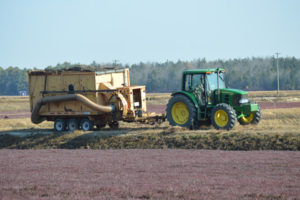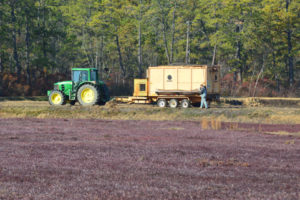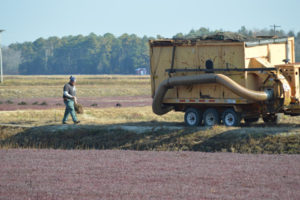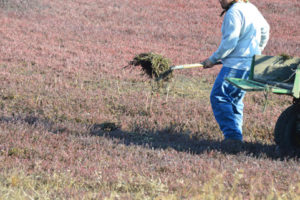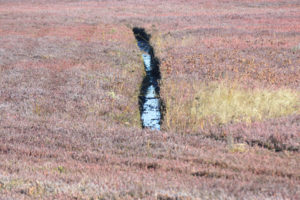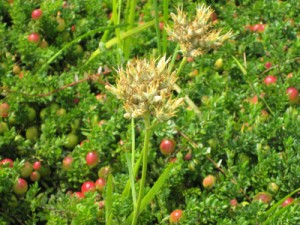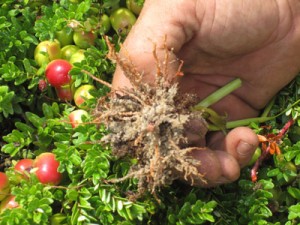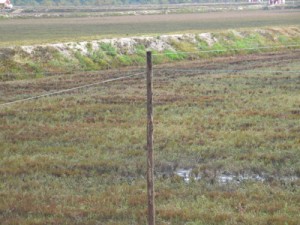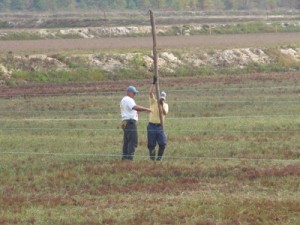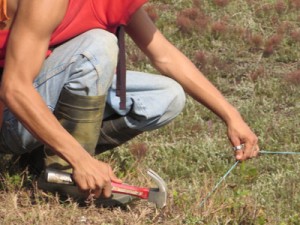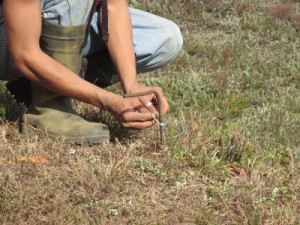All of our harvest teams had a strong finish, and now we’re on to cleaning!
“Cleaning ditches, cleaning excess leaves from bogs, cleaning up everything from harvest. Grass, weeds, debris: all of it,” says COO Byran vonHahmann. “Then once that’s done, we’ll have a crew installing swan string.” Under the direction of Matt Giberson, our foremen are trying out some new equipment to help with some of debris cleanup.
“We’re trying out some new-to-us equipment that municipalities use for leaf and brush pick-up,” Bryan says. “When we harvest and gather off the same corner of the bog every year, all the leaves come to that corner and settle there. Those are hard to rake out of the vines, and then year after year they settle to the ground. Which means that eventually they’ll choke the vines out and kill them. With some bogs, especially the bigger ones, you end up with a lot and that space becomes significant. So the plan is to vacuum those areas right out. We tested it a couple of weeks ago and it worked really, really well to help us reclaim those corners and keep them healthy.”
At the same time, the crew is cleaning out the ditches inside the older bogs.
As far as our other post-harvest project, however: “There’s nothing new with swan string,” Bryan says. “We just have to get it done.”
Tundra swans are a tremendous annoyance to local growers due to their feeding habits. They are particularly fond of red root, a weed that competes with cranberry vines for nutrients. You might think that swans are a natural solution to the problem; unfortunately, when the swans fly in to feed, they not only tear out the red root, they also tear out vines and leave enormous holes that damage the beds themselves.
Since the swans are a protected species, growers have had to come up with a solution to keep them away from the crop. At Pine Island our team installs swan string. To start, the team places rebar in the ground along the longer sides of a bog, about every 75 feet. On the ends of the bog, the team walks it out and determines how many lines they’ll need to run lengthwise though the center.
Once the rods are laid out on the dam, a team of three to five people gets into the bog and walks the string across. Once the entire bog is strung, the team goes back in and puts up poles, which are used to keep the strings out of the water so that they don’t freeze. They’re placed in a checkered pattern, not necessarily on every line. The poles can either be cedar posts or recycled irrigation pipe. In addition to the recycling/environmental aspect, reusing the irrigation line is lighter and easier to handle.
The strings help keep the swans out of the bog by limiting the space available. “Swans are like a commercial airliner,” CEO Bill Haines says. “Having the strings up disrupts their attempt to both land and take off again.” Not all of the bogs are strung; our team maps them out where we have found red root and where the swans have been spotted.
Once all of this is done, our team will be ready for our next targets: sanding and the winter flood!

